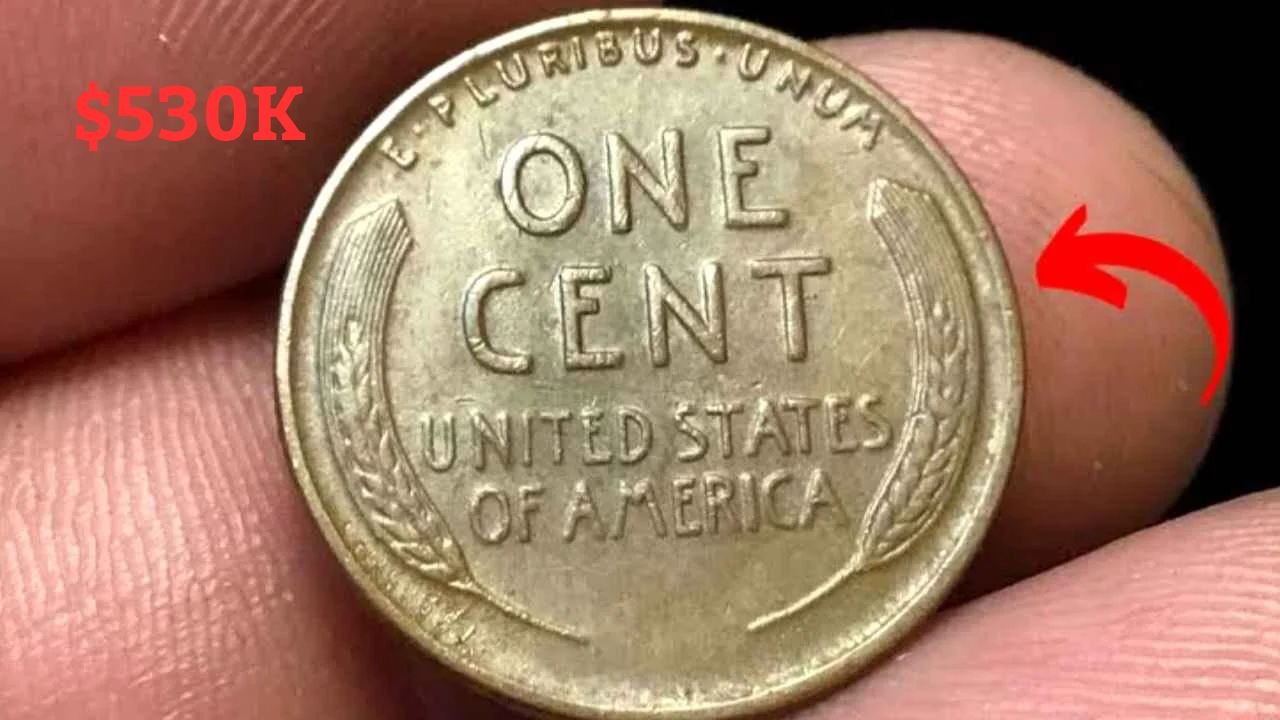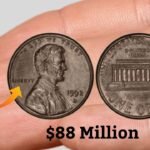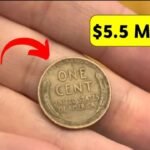The Lincoln Wheat Penny Valued at $530K, Still in Circulation? Here’s What You Need to Know
Imagine finding a coin in your pocket change that could be worth over $500,000. Sounds unbelievable? That’s exactly the case with a rare version of the Lincoln Wheat Penny. This seemingly ordinary coin could actually be a hidden treasure—and yes, some versions are still in circulation today. Here’s everything you need to know about this valuable coin and how to check if you might be holding one.
The History Behind the Lincoln Wheat Penny
The Lincoln Wheat Penny, also known simply as the “Wheat Cent”, made its debut in 1909. It was the first U.S. coin to feature a real person—President Abraham Lincoln—on its face, commemorating the centennial of his birth. The reverse side displayed two wheat stalks, which symbolized America’s agricultural strength.
Designed by Victor D. Brenner, the penny remained in production until 1958, after which the design was changed to the Lincoln Memorial. Over the decades, certain variants of the Lincoln Wheat Penny have become incredibly valuable due to rare minting errors and historical significance.
What Makes One Worth Over Half a Million Dollars?
So, what makes a tiny, one-cent coin sell for a whopping $530,000?
The answer lies in rarity, errors, and demand. Some pennies were accidentally minted on the wrong type of metal. For example, the 1943 Copper Wheat Penny is one of the most famous and rare coins in U.S. history. During World War II, pennies were supposed to be made from steel to save copper for the war effort. However, a few copper blanks were mistakenly used, resulting in a handful of rare and highly valuable copper pennies.
Only about 20 of these 1943 copper pennies are known to exist, and when they do surface, collectors are willing to pay enormous amounts for them.
Key Traits of a Valuable Wheat Penny
Here’s a handy overview to help you understand what makes these coins so valuable:
| Feature | Why It Matters |
| Year of Minting | Certain years like 1909-S VDB, 1943 Copper, and 1955 Double Die are key |
| Mint Mark | Rare mint marks (like ‘S’ for San Francisco or ‘D’ for Denver) can increase value |
| Minting Errors | Errors like double dies or wrong metal blanks boost rarity |
| Condition (Grade) | Coins in mint or uncirculated condition are worth far more |
| Historical Context | War years or special editions add collector interest |
| Quantity Produced | Lower mintage usually means higher value |
Still Out There? How Can These Coins Be in Circulation?
You might wonder: How is it possible that such a rare and valuable coin is still in someone’s pocket?
The truth is, millions of pennies from the early 1900s are still out there—hidden in old jars, piggy banks, or passed along unknowingly. Many people simply don’t know the value of what they have. Some of these coins re-enter circulation through estate cleanouts, coin rolls from banks, or even pocket change from daily purchases.
Since a penny doesn’t draw much attention, it’s easy to overlook. That’s why some of the most valuable Wheat Pennies might still be quietly changing hands today.
How to Spot a Rare Penny in Your Change
Finding a valuable penny is like winning a small lottery—but it starts with knowing what to look for. Here’s how to check:
- Inspect the Date: Look for years like 1909, 1914, 1922, 1943, 1955—these are known for valuable variations.
- Check the Mint Mark: Located under the year, mint marks like S or D can significantly increase value.
- Look for Unusual Features: Blurred or doubled text, off-center images, or odd coloration can indicate an error coin.
- Weigh It: A 1943 copper penny weighs about 3.11 grams, while a regular 1943 steel penny weighs less. A digital scale can help here.
- Use a Magnifying Glass: Small details matter—look closely at lettering, date, and the Lincoln profile.
- Compare with Online Listings or a Coin Book: Having a coin guide can help you verify rare features quickly.
Why Collectors Are Obsessed with the Lincoln Wheat Penny
Among coin collectors, few coins stir up as much excitement as the Lincoln Wheat Penny. Here’s why:
- Nostalgia and Historical Significance: Many collectors love the rich history behind the design.
- Rarity and Value: Some of these pennies are now worth more than luxury cars.
- Entry Point for New Collectors: Lincoln Wheat Pennies are affordable to start collecting, but the potential for high-value finds keeps things thrilling.
- Great Investment Potential: Rare coins tend to appreciate over time, making them a smart long-term investment.
- A Sense of Discovery: Finding a rare coin in everyday life creates a unique thrill few hobbies can match.
Found a Rare Penny? Here’s What to Do Next
If you think you’ve found a rare Wheat Penny, don’t spend it! Take these steps:
- Don’t Clean It – Cleaning can reduce value.
- Weigh and Examine – Use a precise scale and magnifier.
- Get It Graded – Professional grading from agencies like PCGS or NGC can confirm authenticity and condition.
- Contact a Reputable Coin Dealer – They can provide a realistic market value.
- Store It Safely – Use coin holders or sleeves to protect it.
- Consider Selling at Auction – Rare coins can fetch higher bids in specialty auctions.
Frequently Asked Questions
Q1: What’s the rarest Lincoln Wheat Penny?
The 1943 Copper Penny is among the rarest, with some fetching over $500,000.
Q2: How can I tell if my penny is valuable?
Key indicators include the year, mint mark, condition, and any errors or anomalies.
Q3: Is it true people still find valuable coins in change?
Yes! Valuable Wheat Pennies still pop up in circulation or coin rolls.
Q4: Are all old pennies valuable?
Not all. While many have historical value, only certain years or error coins are worth big money.
Q5: Can I sell my penny online?
Absolutely. Sites like eBay or specialized coin auction houses are popular options.
Final Thoughts
The idea that a Lincoln Wheat Penny could be worth $530,000 might seem far-fetched—but it’s absolutely true for certain rare editions. The exciting part? These coins are still out there, hiding in plain sight.
Whether you’re a seasoned collector or just someone curious about their spare change, now is the time to check your coins. You never know—you might just be one lucky penny away from a fortune!




